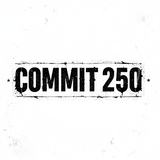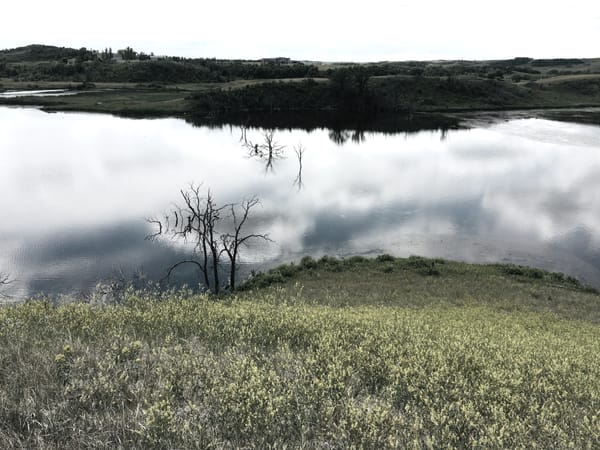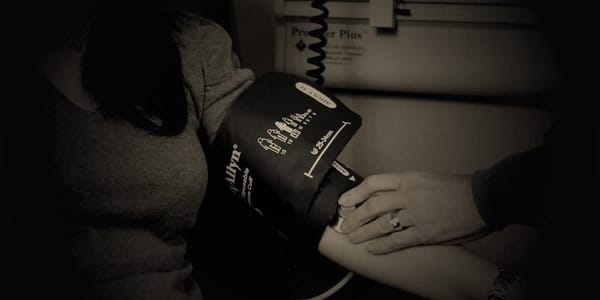A Conversation with Greg Mushen

Insights on Ancestral Diets, ApoB, and Optimizing the Carnivore Diet
Commit 250 is all about transforming your life for the better. Drawing on our nation's 250th anniversary in 2026, we intend to provide as much health education as possible to help individuals navigate what seems to be a growing field of complexity (biohacking). As part of our focus on evidence-based health education, we sat down with Greg Mushen (@gregmushen), a tech veteran turned health hacker who merges science with self-experimentation to optimize longevity and performance. At 49, Greg shares his insights on everything from ancestral eating patterns to lipid markers and how to address potential gaps in popular diets.
In this interview, Greg challenges common myths about "ancestral" diets, explains the critical role of ApoB in cardiovascular health, and offers practical ways to mitigate risks associated with carnivore while emphasizing personalization and sustainability. We've cleaned up the transcript for clarity, correcting transcription errors (e.g., "ApoB" for "AOP/AOB/April B," "atherogenic" for "althrogenic," etc.), and organized it into key sections for readability.
Addressing Ancestral Diet Myths
Greg starts by questioning the romanticized view of carnivore as the ultimate "ancestral" diet, pointing out biases in the evidence and human adaptability.
"You can essentially think of ancient people as being preserved in a freezer—what we find are mostly remains from colder regions like during the Ice Age. But for someone in Central Africa, no Ice Age, no preservation—those remains are gone. We'll probably never know what they ate unless we find some in a tar pit in the Congo.
"A lot of people think carnivore is great because it's 'ancestral,' but the truth is, we don't really have a good idea of what an ancestral diet was if we're being honest. We know we developed amylase genes between 100,000 and 300,000 years ago—we wouldn't have needed those if we weren't eating starches. So, there's a case that we've been eating plants for a long time.
"I'm not sure if you've ever been on a trip where you're hungry and hiking, but you'll eat anything. In fact, I've been on climbing trips where we talked about food for six hours because we were so hungry. So, I don't think it's reasonable to assume that people in areas with plants wouldn't eat them if they were hungry.
"People did survive on meat-heavy diets in northern latitudes, but we don't know how optimally they lived. Was that an optimal diet, or just enough to get them to reproduction before they died? There are people selling 'ancestral diet' info as fact, but look at modern hunter-gatherers: The Tsimane eat 70% carbs, 10% protein, 20% fat, and have the lowest atherosclerosis ever recorded. The Maasai eat five times more saturated fat than we do but walk 16 miles a day, so they have plaque but not much heart disease.
"The point is, diet isn't the only vector—especially on carnivore, you really need to not be sedentary. That's going to raise a lot of risk."
The Body as a Flexible Chemical Factory
Greg emphasizes that our bodies are adaptable but thrive on balance, not purity.
"Our bodies are circadian chemical factories—they don't really care what we put in them as long as it has the substrates they need. It doesn't care if the oil was produced in a factory; all it sees is the monounsaturated fatty acids, some oleic acid, and saturated fat. It's like, 'Okay, I know what to do with this.'
"People tend to go into these purist modes, and it provides false confidence. Ultimately, the diet should get you results, and you should like it—because if you don't, you're not going to stick with it.
"For weight loss, calories are 95% of it. I know people hate CICO [Calories In Calories Out], but it's true—look at the Twinkie diet where the guy ate only Twinkies but dialed in his calories and lost weight. Then protein for muscle preservation. You don't need to overthink it, but any diet has gaps you need to address.
"You can do carnivore in the most unhealthy way possible, or you can cover the nutrient gaps. I was talking to a guy this morning who's doing great on it because he's addressing them."
Key Critiques of Carnivore: Saturated Fat, ApoB, and Fiber
Greg dives into the science, highlighting saturated fat's impact on ApoB—a key marker for atherogenic particles—and why fiber matters, even if it's not what some argue as "essential."
"The big thing with carnivore is saturated fat. I know people hate to think it raises ApoB, but it does—despite that new meta-analysis that only included nine studies. Saturated fat raises ApoB, and ApoB is exposure over time. So, limit saturated fat (harder on carnivore if you're just eating steaks) or sequester it by walking as much as possible—like 16 miles for the Maasai.
"Another thing the carnivore community might hate: sequester ApoB through bile acid sequestration, aka have fiber with your food. Fiber isn’t ‘essential’ in the survival sense, but in the optimization sense the evidence is overwhelming.
"What is ApoB? It's a lipoprotein attached to LDL and a good proxy for total atherogenic particles. You could have high LDL but low ApoB (low atherogenic particles) and be better off than someone with lower LDL but higher ApoB. ApoB is probably the most important single lipid marker.
"That's why I wrote that post—carnivore can become a religion where everyone claims the sky is pink. But you've got decades of research: high ApoB over decades leads to plaque. Some say, 'I have low inflammation, so it doesn't matter.' It does—it's slow accumulation, like pouring bacon grease down your pipe over decades.
"Others get a CAC scan and say, 'My CAC is zero.' That's fine, but CAC is late-stage; it doesn't measure soft plaque. So, on carnivore, get ApoB to an appropriate level—through 5g psyllium husk per meal, a statin, or lean meats."
Why LDL (and ApoB) Matters
Greg explains the physics and causality behind lipid retention.
"Think of bending a hose: water at the bend has more pressure and turbulence. That's what happens in our endothelium—ApoB particles get attracted at bends, not straight sections. It's a physics problem.
"The particle gets retained, oxidizes—like a rotten fish in a fence—and the body covers it with macrophages, then calcifies. It's repairing oxidized LDL damage.
"It's as close to settled science as you get. Mendelian randomization trials (highest quality) group by genes: low natural LDL vs. high, over lifetimes. It proves causality, stripping confounders—ApoB is causal.
"Things get tricky because LDL isn't the biggest risk factor—insulin resistance is 10x bigger. Paul Saladino has high LDL but is healthy, insulin-sensitive, great blood pressure. From that standpoint, he's right. But it's like saying your house wiring is perfect except one shorted outlet. Maybe fix that too—it's fifth on the CVD risk list, but don't ignore it."
Filling Nutrient Gaps on Carnivore
Animal foods are nutrient-dense, but Greg notes key gaps and simple fixes.
"Animal foods are pretty damn nutrient-dense—we're eating the thing that ate the plants. But there are missing things:
- Vitamin C: Hard to get; incorporate a kiwi a day or supplement.
- Molybdenum: From high protein, waste includes sulfites that build up. Molybdenum clears them—high in beans, but supplement it. Test by taking a dose and checking urine pH; it'll drop if sulfites are high.
- Potassium: We hoard sodium but treat potassium as unlimited—evidence we ate tons of plants. Need about 5g/day; hard to supplement safely (it's in lethal injections), so get from coconut water, bananas, potatoes, avocados. Important for fluid balance and pH; too much meat acidifies, stressing kidneys.
- Short-chain fatty acids (SCFAs): Gut expects them, like butyrate for colon health, immunity. From fermentable fiber or fermented foods (Maasai drink tons of fermented milk). On carnivore, add fermented dairy or supplements.
"This isn't limited to carnivore—every diet has gaps. It's like Tetris with calories; hard to get everything from food alone."
Key Takeaways for Commit 250 Participants
- Personalize Your Diet: Focus on what works and you enjoy—sustainability trumps ideology.
- Monitor ApoB: It's the top lipid marker; aim low through diet, movement, or interventions.
- Address Gaps: Even "perfect" diets need tweaks—fiber, vitamins, minerals.
- Move More: Sedentary + high saturated fat = risk; emulate the Maasai's activity.
- Question Ancestral Claims: Evidence is incomplete; modern hunter-gatherers vary widely.
For more on Greg's work, follow him on X (@gregmushen). If you're in the Commit 250 program, use this to inform your diet choices and adjust your diet each evolution to dial in what works best for you - experiment safely, and build habits that last.





